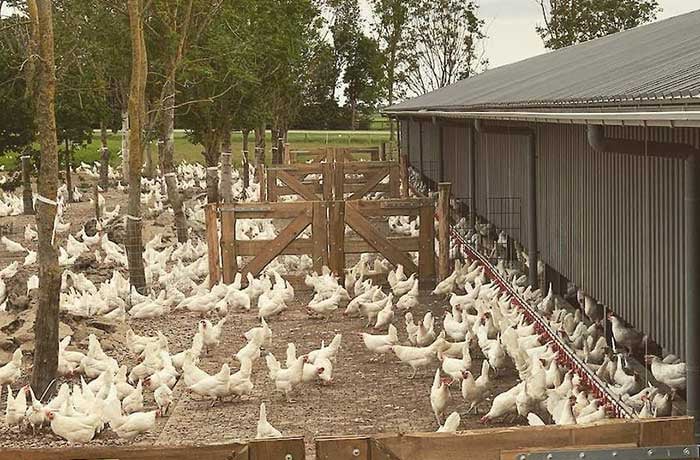Poultry farmer Klaasjan Salomons is very satisfied with the Bolegg Terrace system of Vencomatic Group. Klaasjan: "At the end of the day, it is mainly about the quality of the eggs, which is higher with this aviary system. Klaasjan also uses the Clima+ Unit in the barn with the Bolegg Terrace. It is interesting to see how Klaasjan has linked this Unit to its own equal pressure system.
Klaasjan Salomons (46) has a laying hen company together with Maroesjka (45) in Dronten (FL) . At the main location, 107,000 common laying hens are kept: half Freiland and the other half free-range. At the bio-location, 16,100 white bio-laying hens are kept. Klaasjan: "Organic hens are usually brown, but I want white ones because they are more profitable for an entrepreneur. Our white organic eggs go to Germany because they don't care if an organic egg is white; in the Netherlands white doesn't sell as easily".
Safe to the nest
The barn at the bio-location is equipped with the Clima+ Unit and the Bolegg Terrace system of Vencomatic Group. Why did you choose this aviary system? Klaasjan: "We were looking for a system with a good overview for the staff, but also an animal-friendly system in which the animals can easily go upstairs. In the Bolegg Terrace, the hen can jump into the system from the ground to reach the nest. Jumping from scaffolding to scaffolding, as with many other systems, does not have to be done. That's why the hen feels safe on her way to the nest and that eventually translates into little outside eggs".
Oiled machine
Klaasjan is very pleased with the service and aftersales that Vencomatic Group provided, together with its dealer Smits Agro. "Selling a system is not difficult. To get it completely according to the customer's wishes is another story. They thought carefully about how the whole process runs. Furthermore, I was really surprised about the assembly process. Pallets with numbered boxes all came in, but the exporter knew exactly where which box should be. The assembly ran like a well-oiled machine. The only thing in the whole process they were wrong about was the amount of manure they under-estimated. But we solved that together with a heavier engine".
Own barn aeration
Klaasjan uses the Clima Unit for his organic stable. "Because you have fewer animals per square metre of manure belt on an organic site, the manure can dry better. That's why we actually needed a heat exchanger of about 15,000 cubic metres, but we chose a heat exchanger of 22,000 cubic metres. We use the overcapacity of the exchanger for our own barn aeration. For this purpose, we laid two tubes through the barn with an outlet every 10 metres. In this way, the warm air we have available goes directly to the animals, and not via the manure belt aeration. In this way, we always have a dry barn and are less bothered by cold easterly winds because there is less cold wind coming in due to the equal pressure created".
First species only
Klaasjan can't really say anything negative about the two systems in his organic barn: "Yes, it now seems as if I'm advertising for Vencomatic Group, but you just notice that they have a lot of knowledge about poultry farming and that's reflected in their barn systems. What matters in the end is that the Bolegg Terrace system means that there are very few floor eggs. And the few outside eggs that are there remain clean. This is because the litter is clean, partly thanks to the Clima Unit, which ensures a dry climate in the house. As a result, we almost only have the first type of eggs".
Less and drier manure
In addition to poultry farmer, Klaasjan Salomons is the owner of Salomons Agro bv, a company in manure drying systems. Klaasjan: "A poultry farmer can earn money if he removes fewer kilos of manure that is also as dry as possible. That is possible with our drying system. It's all about generating the forcing process in the manure. To do this, we install a pressure ventilator on the outside of the manure storage, from which tubes blow air through the manure. We now have about eighty installations running throughout the Netherlands. Because of the lower manure removal costs, a poultry farmer with 60,000 hens can recoup his investment for our manure drying system within a year and a half".












.png?width=160&height=132&name=Egg%20packers%20-%20Vencomatic%20Group%20(2).png)
.png?width=160&height=132&name=Meggsius%20Select%20-%20Vencomatic%20Group%20(2).png)













